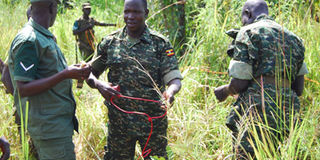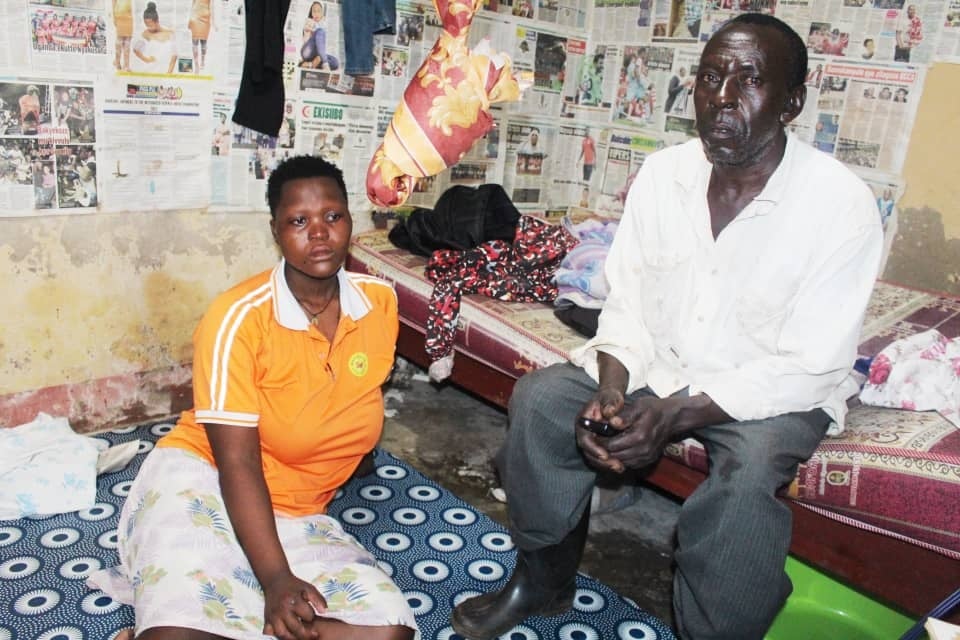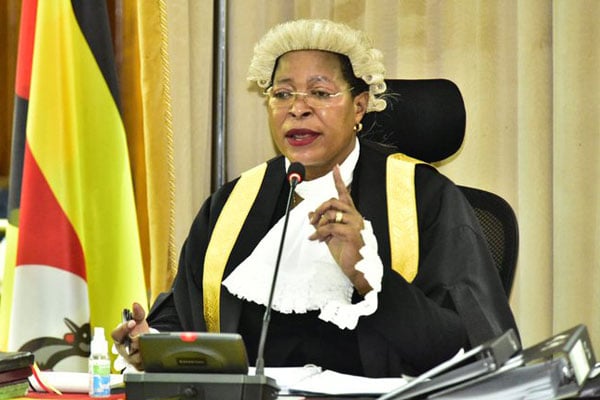Why it may take decades to free the north of landmines

Risky. Soldiers prepare to detonate an 82mm shell in Laminadera A Village, Koro Sub-county in Gulu District recently. PHOTO BY TOBBIAS JOLLY OWINY
What you need to know:
- Appeal. Over the years, unexploded ordnances (UXOs) such as landmines, grenades, mortars and artillery shells have claimed many lives and crippled others in northern Uganda.
It was a chilly Friday morning when Mr Fred Ojok alongside his two brothers ploughed their farmland in preparation for the upcoming planting season.
As Mr Ojok bent down to investigate the source of a hissing sound from a round metal, it exploded. He had been struck by a landmine.
The resident of Wilul Village in Paicho Sub-county, Gulu District, sustained injuries in his lower abdomen and left hand as a result of the explosion.
A team from police, UPDF and United Nations Department of Security took Mr Ojok to St Mary’s Hospital, Lacor.
Mr Ojok is the second victim of landmines in Acholi Sub-region in 2020.
Another victim
The same happened to Ms Esther Lakari, a resident of Panyul Village in Agago Sub-county, Lamwo District. Lakari in 2010 set off to her farm to harvest food for her family. She had no idea that tragedy awaited her.
Lakari says she was walking to her garden when she had a blast and became unconscious. She later woke up at Kitgum Hospital to find her right leg amputated.
She had stepped on a land mine. Over the years, unexploded ordnances (UXOs) such as landmines, grenades, mortars and artillery shells have claimed many lives and crippled others in northern Uganda.
Last year, at least six people were reportedly hit by UXOs, claiming lives of four of them.
The landmines were dropped during the Lord’s Resistance Army (LRA) insurgency that lasted about two decades.
These grim leftovers from the war between government forces and rebels have continued to ravage residents of northern Uganda several years after the LRA were defeated and fled to neighbouring DR Congo and the Central African Republic.
Effect on livelihoods
Because of fear of being harmed by UXOs, many people have abandoned their gardens.
Maj Caesar Olweny, the 4th Division army spokesperson, says they are currently financially incapacitated to conduct demining exercises.
“Each time we get intelligence information about these weapons, we either do not have fuel or vehicles to reach the sites. At times the commanders dig into their own pockets. Many times we just call the UN mission directly for back up,” he says.
Maj Olweny adds that it may take more than five decades to clear the UXOs scattered in different parts of the region. “War involves three stages; planning, fighting and demobilisation. We are in the demobilisation stage, which takes more time than the rest. Remember we are incapacitated in terms of resources to conduct such missions,” he says.
“The prevalence of mines and explosive fragments of war must not be ignored as their presence leads to significant health, social, environmental and economic hazards,” Maj Olweny adds.
The fragments of war, according to the army, cover military weapons and ammunition such as bombs, rockets, artillery shells, mortars and grenades that were used by the fighters but failed to detonate. The army says the fragments can even last centuries underground.
Efforts
Since 2006, the National Mine Action Programme in collaboration with Danish Demining Group, the humanitarian mine action unit of the Danish Refugee Council, have recovered and destroyed about 7,500 anti-personnel and anti-tank mines.
Local charity organisations such as Landmine Survivors Association (ULSA), Casualties and Victims Assistance that are conduct education on unexploded ordnance and providing support for those injured unexploded ordnance, have called for assistance from government.
They say more financial help and other assistance are needed to rehabilitate those maimed by unexploded ordnances.
Mr Geoffrey Nyeko, the chairperson of Palabek Kal Sub-county in Lamwo District, says incidents of such weapons being discovered have become rampant in the area.
“There was one that killed two teenage hunters last year. These bombs are there and we always warn our people to be alert when they find such weapons. Even when they are digging, they have to be security conscious,” Mr Nyeko explains.
In Lamwo alone, large expanses of land remain contaminated by landmines and other fragments of war, according to Mr James Nabinson Kidega, the RDC.
“When an area is contaminated by these weapons, land owners abandon it because of fear. This has affected several areas in the district,” Mr Kidega says.
The RDC adds that such weapons are usually discovered in villages, fields, roadsides, around water sources and near institutions such as schools.
What leaders say
“What we continue to preach to our population is that the community and local leaders should liaise with UPDF so that unexploded ordnances can be safely removed or detonated. We are carrying out extensive community sensitisation in that regard,” Mr Kidega says.
Mr Jimmy Patrick Okema, the Aswa region police spokesperson, says they are always on standby to respond to alarms made by the community about the presence of such explosives.
Mine-affected countries are ultimately responsible for caring for mine victims, according to the Convention on the Prohibition of Anti-Personnel Mines (Ottawa Convention).
But the situation in northern Uganda has another layer of complexity. Government is aware of the scale of the problem affecting landmine victims but has struggled to do act.
“There is no quick fix to changing attitudes or outlooks to those with disabilities. To different degrees, when a person is seen without a limb, they are mentally characterised as a victim. Victimisation is frequently accompanied by stigmatisation,” Ms Linda Auma, the Amuru RDC, says.
After the end of the insurgency, there are many people with disability sustained from such explosives. Without access to care, many victims of landmines are seen as burden, she adds.
Most affected
According to Wikipedia, North Africa, and in particular the desert areas of The Sahara, are heavily mined and with serious consequences for the local population. Egypt is the most heavily mined country in the world (by number) with as many as 19.7 million mines as of 2000.
Land mines also pose a persistent threat to local people all over the continent, including the countries of Ethiopia, Somalia, Nigeria, Senegal, Angola, Kenya, Uganda and South Africa to mention just a few.
In the Tropics, typhoons and floods often displace and spread landmines, further aggravating the problem. In Mozambique, as much as 70 per cent of the country is now contaminated with mines.




